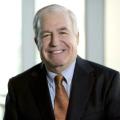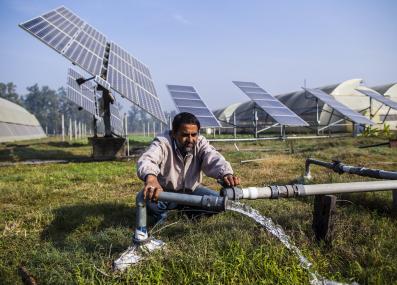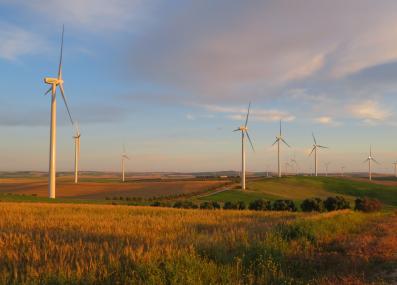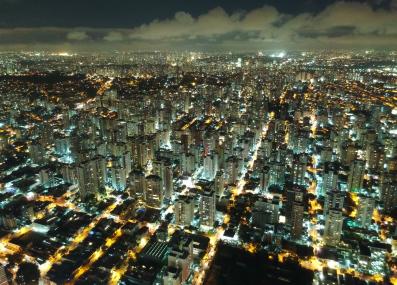Have a question?
Can we do anything useful with excess solar and wind energy, besides store it?
Yes: we could use it to power flexible activities at different times of day, or to send electricity further afield — as long as the grid allows it.
August 14, 2024
Because solar panels and wind turbines make as much energy as there is sun and wind available to power them, at times these renewable energy sources will give us more electricity than we can use. Today, this quandary only crops up in a few places, like California and Texas, where wind and solar make up an especially large share of the energy mix. But as the electric grid becomes cleaner, more and more places will find themselves dealing with periods of excess energy, when wind and solar generation is relatively high and electricity demand is relatively low.
That presents an opportunity: finding new ways to use this energy, so it doesn’t go to waste.
The most common solution for too much wind or solar energy is to store it in big batteries. These can then support the grid when renewable energy is scarce, like as the sun is setting or on a windless day. But there are other potential uses, says Paul Joskow, an economics professor emeritus at MIT and former director of the MIT Center for Energy and Environmental Policy Research.
First, there’s “flexible demand.” Some uses of electricity, like turning on the lights and cooking meals, need to happen precisely when we need light and food, but many other activities could happen at any time of day. For the average electricity user, that may mean charging an electric car in the middle of the day, when solar energy is plentiful, or later at night (e.g. after 8 pm) when wind turbines are spinning and demand is relatively low. Good management of flexible demand also means ensuring that not everyone switches their electricity use to the same time, but that there’s a spread of charging across several hours in the evening to avoid putting too much stress on the electric grid.
On a larger scale, certain industries like petrochemical plants, desalination facilities,1 or clean hydrogen projects may also be able to shift their production to times that better align with excess renewable electricity.
The challenge for flexible demand is that electricity prices in most states don’t encourage it, says Joskow. The exception is California, where customers can save money by changing the timing of electricity-heavy tasks: electricity is cheaper in the middle of the day, quite a bit more expensive between 4 and 9 pm, and cheap again later at night. Joskow is part of a research group at the MIT Energy Initiative that has been developing alternative electricity pricing structures to provide better incentives for customers to shift some of their electricity use to times when supply is abundant, while minimizing pressure on the grid.2
Computerized devices can also make some demand flexibility automatic. “Smart” electric meters and chargers can pay attention to electricity prices and generation when people do not, and shift charging and other tasks to times when there’s more renewable electricity to use. Programs where utilities control certain appliances—like cycling air conditioners on and off to control demand, while offering customers a discount for participating—could also prove popular, says Joskow.
Another solution to the too-much-renewable-electricity dilemma, he says, is building out the transmission system. In certain parts of California, a lack of long-distance transmission lines keeps the grid from moving excess solar from regions with high supply to regions with high demand. “If we could eliminate those constraints, we basically could use that excess solar energy more widely,” says Joskow. Local transmission constraints have also meant that solar operators in California have at times had to cut back on solar generation to prevent that electricity from overwhelming the grid—electric lines can only handle so much electricity at once without risking damage. State and federal regulators and policymakers have finally begun to address both types of transmission constraints, says Joskow.
Still, even with all these measures, an optimal clean energy system is likely to be “overbuilt”—meaning there will be hours and days when we simply can’t use as much solar and wind energy as we’re making. “You can't eliminate this issue. It's inevitable if you have a deeply decarbonized system with wind and solar generation that are dominant, because there just are going to be hours where the demand is low and supply is high,” says Joskow.
In the end, it’s not a huge deal if we’re producing excess wind and solar and not putting it to use. Unlike oil, coal, or gas, renewable energy is not a finite resource, these projects cost nearly nothing to run once built, and they produce no climate-warming greenhouse gas emissions when generating electricity. So there’s not much of a catch to producing too much of it. One study found that overbuilding the system by as much as 43 percent would yield the lowest cost for a clean electricity system, saving more than $3 trillion compared to a system that does not include overbuilding.3
Thank you to Eric Rodriguez for the question.
Submit your own question to Ask MIT Climate
Get the latest from Ask MIT Climate monthly in your inbox
1 Wu et. al., "Flexibility quanitification of desalination plants for demand response: An adaptive robust optimization methodology." Applied Energy, Volume 373, November 2024, doi:10.1016/j.apenergy.2024.123835.
2 For examples, see: Paul L. Joskow, MIT Department of Economics: Papers, op-eds, testimony and presentations.
3 Wang et. al., "Determining cost-optimal approaches for managing excess renewable electricity in decarbonized electricity systems." Renewable Energy, Volume 178, November 2021, doi:10.1016/j.renene.2021.06.093.








